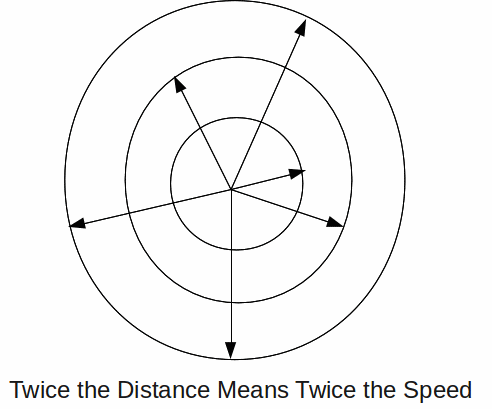When we look at the spectra from distant galaxies, we find that the light from them is shifted towards the red end of the spectrum. The wavelength of the light we receive is longer than the wavelength of light due to the same atomic transitions on Earth. The reason for this is that those same distant galaxies are moving away from us, so the light under goes a Doppler shift. We can work out the speed with which they are receding by finding the Doppler shift – called the redshift in the case of light from distant galaxies – and we find that the speed with which galaxies are receding from us is directly proportional to their distance from us. This is shown in the diagram below, in which the distance indicated by the concentric circles is proportional to the speeds, indicated by the lengths of the arrows.

Moreover the same picture can be drawn at any point in the Universe. At every point in the Universe, the speed of recession of galaxies is proportional to the distances of galaxies from that point. We can trace the galaxies back to their 'start point'. If we do this we find that all the galaxies seem to have been in the same place at the same time. There seems to have been an explosion which gives rise to the Universe we seen today. This explosion is called 'The Big Bang'.
There are many pieces of evidence in favour of the Big Bang. Apart the the observation above, the most important are the cosmic microwave background radiation which is basically an echo of the bang, and the observed proportions of elements in the Universe, which are consistent with computer simulations assuming the big bang to have happened.
